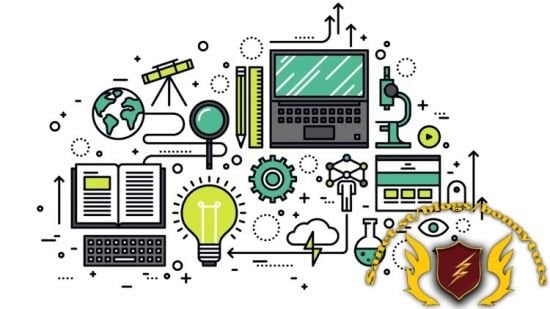
Published 7/2024
Created by Wassim Dhokar
MP4 | Video: h264, 1280×720 | Audio: AAC, 44.1 KHz, 2 Ch
Genre: eLearning | Language: English | Duration: 53 Lectures ( 3h 13m ) | Size: 1.66 GB
Embedded Systems, Debugging STM32L4 Microcontroller
What you’ll learn:
First exposure to embedded systems concepts and terminologies
Getting the basic of embedded systems in term of definition and architecture
Building good understanding of some key words in embedded systems which will help Students in their courses as well as Person preparing for first job interview
You will learn about Interrupt and Interrupt Latency Concept
You will learn about CPU as main computing unit within Embedded device
You will learn some basic features of some Peripherals like SPI, UART, I2C, DMA …
You will be able to Build your makefile project to run multiple examples
You will learn how to use Keil-mdk to load your program into STM32L4 Microcontroller
You will learn how to Debug your program, Dump Memory area, Explore Cortex-M4 registers
Requirements:
Some very basic knowledge and interest on embedded system
STM32L4 Microcontroller
Windows Machine
Description:
For what Embedded devices are needed?In our days, we are more and more aiming to deploy and use edge processing computing devices ,where the usage of normal big workstation PCs or laptops to provide specific functionalities will be bottle neck due to:Big occupied space by standard workstation PCsMany use cases requires low power consumptionAbility to work and survive on small battery as source of powerPortability and ability to be swapped easilyCapable to communicate with different low power based protocol like BLE (Bluetooth Low Energy), Lora protocolSuch requirements and use cases cannot be satisfied by standard PCs/Laptops …, therefore the need for small hardware or devices capable of running small program and can survive in low energy based sources start to be must to have in all fields like Automotive, Aerospace, IOT, Smart House, Medical devices, … .Different Types of Embedded devicesWe are talking here mostly about MCU and MPU based devices.MCU or Microcontroller Unit are low energy based devices where the deployed micro-processors there run on low frequency with low energy consumption. MCU can be found all over the places like in washing machines, Smart TV, Modems, Smart Phone, Note book, Card Payment, Credit Card, Smart Watch, Motor Control Devices …MPU or Micro-Processor Unit are high performance embedded devices using full featured processors capable of running on higher frequency to allow the deployment of general purpose Operating System like Embedded Linux , QNX …What to expect from this CourseWe will try first to focus on the theoretical part , to get better understanding of the embedded devices architectures weather it is and MCU or MPU based design. We will try to:Get an overview about different Blocks and Hardware logic used with CPU (Central Processing Unit) used to execute your program instructions.Get to known some of the well known Peripherals and IPs used within an MCU Device, and some of the features supported by those PeripheralsYou will Learn some Basic concepts like Interrupt, Interrupt Latency, Low Power modes and many other fundamentals Blocks used within an MCU as well as MPUYou will get as part of this course a functional makefile project with set of examples, where you can easily build each example separately , load the program via Keil-mdk ide, debug your programYou will learn how to step through your code using keil-mdk ide from ARM, Dump memory spaceYou will get to know STM32L4 Microcontroller and use it for developmentExamples are used as prove of concepts of different concepts we have learn along different course sessionsAs part of those course you will get:Makefile project that can be used as starting point for your own project developmentSet of examples used as prove of concepts of some microcontroller fundamentalsAll Board documentation (STm32L432kc Nucleo Board) and example of reference manual to get the memory map (flash address, sram address) of this MCUInstallation links of different tools and packages required to build your makefile project and debug your example programSo please checkout the last session of this course to get the full packages.Welcome to this Course and let’s start to build-up our Embedded Systems Knowledge!
Password/解压密码www.tbtos.com
转载请注明:0daytown » Your First Steps in Embedded System Programming